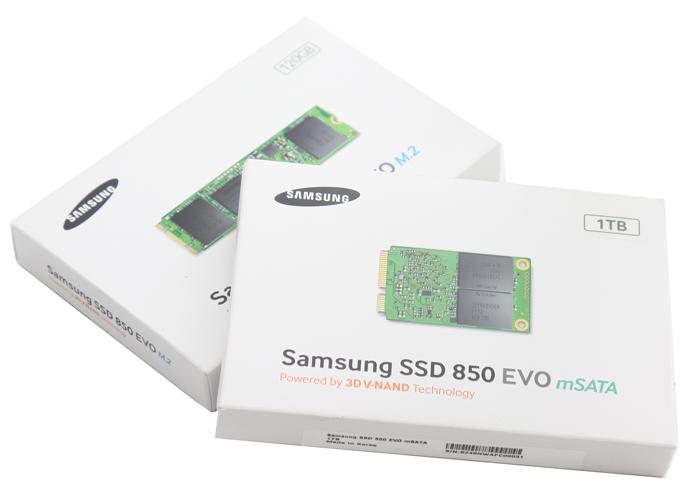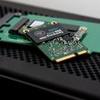Introduction
The Samsung 850 EVO M.2 and mSATA tested
Though we already reviewed the regular EVO 850 SSD series, there are more form factors and a week ago Samsung announced their Samsung 850 EVO SSD based on the M.2 slot as well as the mSATA slot. Samsung submitted both form factors for some testing as we received a 120 GB M.2. version, and a nice 1 TB version of the mSATA product. Interesting stuff as these smaller form factors are just as fast as a regular SSD. The M.2 is more intended for enthusiast class motherboards, but that mSATA form factor is often used in laptops. And boy let me tell you, if you'd like to speed up your laptop's mSATA storage, then look no further. The new SSDs are a stunning series of storage technology as they have an enthusiast class speed yet are made to be very competitive in pricing, armed with truckloads of performance and that attractive pricing.
As you guys know, we've been testing NAND flash based storage ever since the very beginning, and it is surprising to see where we have gotten. The SSD market is fierce and crowded though. While stability and safety of your data have become a number one priority for the manufacturers, the technology keeps advancing at the fast pace it does, the performance numbers a good SSD offers these days are simply breathtaking! You get between 450 MB/s to 500 MB/sec on SATA3 which is the norm for a single controller based SSD. Next to that, over the past year, NAND flash memory (the storage memory used inside an SSD) has become much cheaper as well. Prices a year ago settled at just under 1 USD per GB. That was two to threefold two years ago. These days a good SSD can be found under 50 cents per GB. With parties like Samsung, Toshiba and Micro, the prices have now dropped by another 20%, you can spot SSDs for 40 cents per Gigabyte!
This means that SSD technology and NAND storage has gone mainstream and due to the lower prices, the volume sizes go up as well. Years ago, 64 GB was hot stuff, then slowly we moved to 120 GB, last year 240 GB for an SSD in a PC was the norm, in the upcoming year we'll slowly transition to roughly 500 GB per SSD as the norm as such a drive is going to hover between 200 to 250 USD/EURO. With the market being so huge, fierce and competitive, it brought us to where we are today... nice volume SSDs at acceptable prices with very fast performance. Not one test system in my lab has an HDD, everything runs on SSD while I receive and retrieve my bigger chunks of data from a NAS server here in the office. The benefits are performance, speed, low power consumption and no noise. You can say that I evangelize SSDs, yes Sir... I am a fan.
Samsung’s new 850 EVO product line is powered by the company’s new MGX controller. A controller with a low power 2-core design, this drive will be amongst the fastest we have ever tested. Bear in mind that the 1 TB models of the EVO series will get the MEX controller based on a 3 core ARM design. It’s not just about performance though, it is about endurance as well. In a nutshell, endurance is the number of program-erase cycles an SSD has before you can't write onto it anymore. Samsung claims you can write at least 75 TB on the 120 and 250 GB version and 150 TB of data on the 850 EVO 500 GB and 1 TB versions before they run out of P/E cycles. And yes, that is a lot.
IOPS numbers are now reaching the 90,000 to 100,000 marker (depends on volume size). Just one-tenth the weight of a traditional 2.5-inch SSD, the M.2 and mSATA SSDs are ideal for users looking to upgrade their desktop or ultra-thin PCs with high-capacity, high-performance storage.
Yeah... have a peek, and then let's head onwards into this review.

Samsung 850 EVO Series SSD with MLC 3D V-NAND M.2. and mSATA

